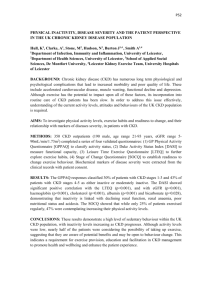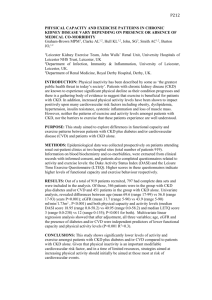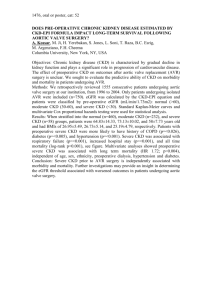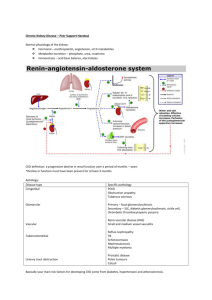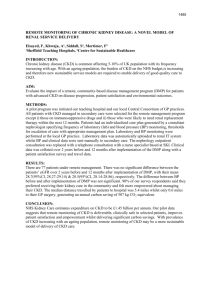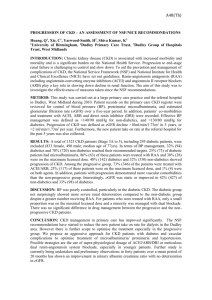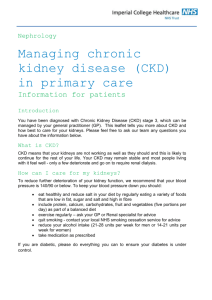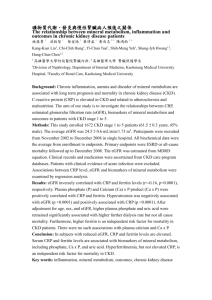Outcomes of Patients With Acute Tubulointerstitial Nephritis at the
advertisement
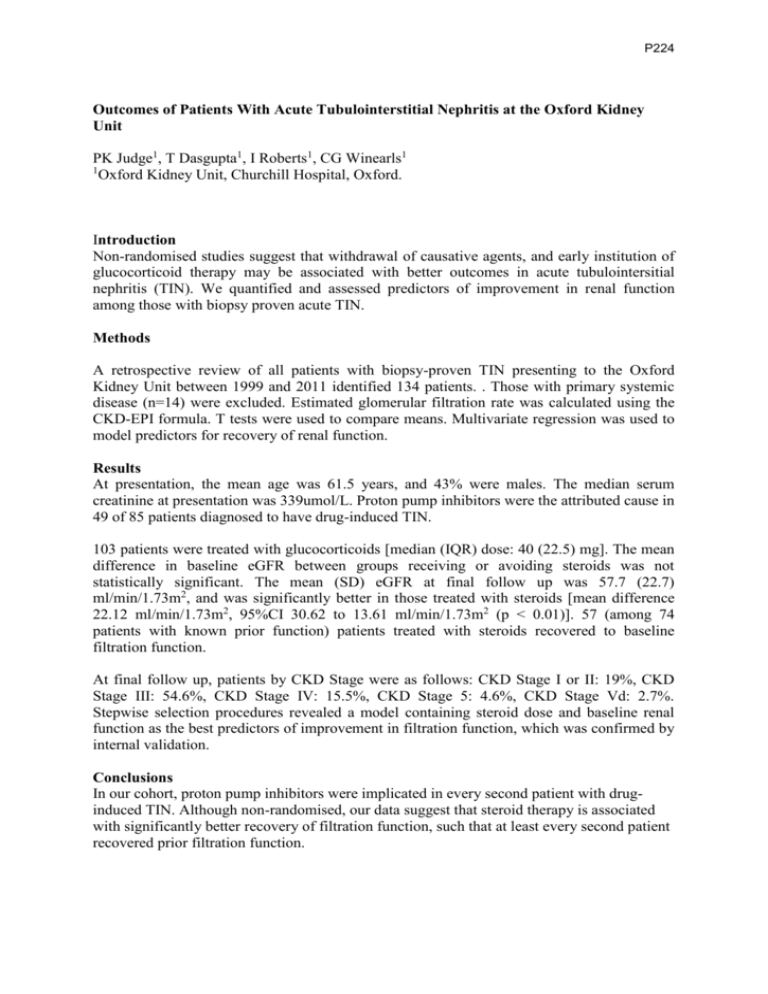
P224 Outcomes of Patients With Acute Tubulointerstitial Nephritis at the Oxford Kidney Unit PK Judge1, T Dasgupta1, I Roberts1, CG Winearls1 1 Oxford Kidney Unit, Churchill Hospital, Oxford. Introduction Non-randomised studies suggest that withdrawal of causative agents, and early institution of glucocorticoid therapy may be associated with better outcomes in acute tubulointersitial nephritis (TIN). We quantified and assessed predictors of improvement in renal function among those with biopsy proven acute TIN. Methods A retrospective review of all patients with biopsy-proven TIN presenting to the Oxford Kidney Unit between 1999 and 2011 identified 134 patients. . Those with primary systemic disease (n=14) were excluded. Estimated glomerular filtration rate was calculated using the CKD-EPI formula. T tests were used to compare means. Multivariate regression was used to model predictors for recovery of renal function. Results At presentation, the mean age was 61.5 years, and 43% were males. The median serum creatinine at presentation was 339umol/L. Proton pump inhibitors were the attributed cause in 49 of 85 patients diagnosed to have drug-induced TIN. 103 patients were treated with glucocorticoids [median (IQR) dose: 40 (22.5) mg]. The mean difference in baseline eGFR between groups receiving or avoiding steroids was not statistically significant. The mean (SD) eGFR at final follow up was 57.7 (22.7) ml/min/1.73m2, and was significantly better in those treated with steroids [mean difference 22.12 ml/min/1.73m2, 95%CI 30.62 to 13.61 ml/min/1.73m2 (p < 0.01)]. 57 (among 74 patients with known prior function) patients treated with steroids recovered to baseline filtration function. At final follow up, patients by CKD Stage were as follows: CKD Stage I or II: 19%, CKD Stage III: 54.6%, CKD Stage IV: 15.5%, CKD Stage 5: 4.6%, CKD Stage Vd: 2.7%. Stepwise selection procedures revealed a model containing steroid dose and baseline renal function as the best predictors of improvement in filtration function, which was confirmed by internal validation. Conclusions In our cohort, proton pump inhibitors were implicated in every second patient with druginduced TIN. Although non-randomised, our data suggest that steroid therapy is associated with significantly better recovery of filtration function, such that at least every second patient recovered prior filtration function.

